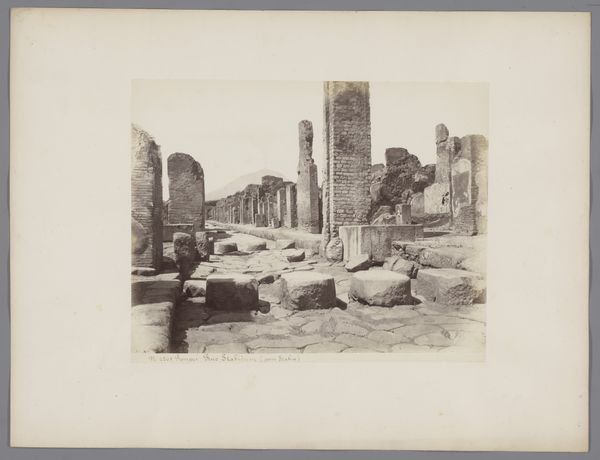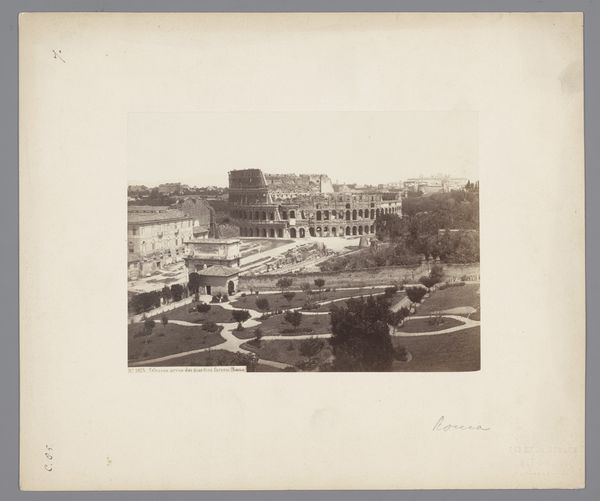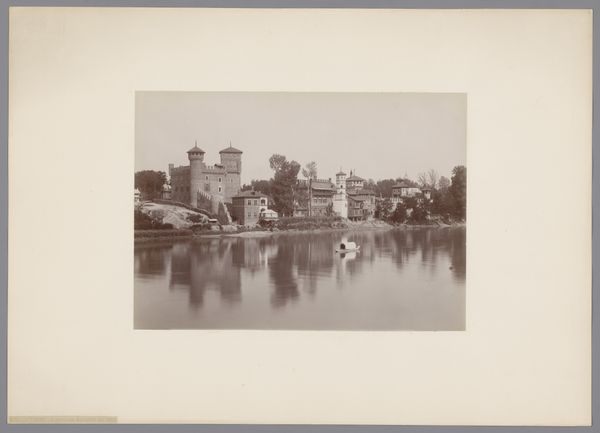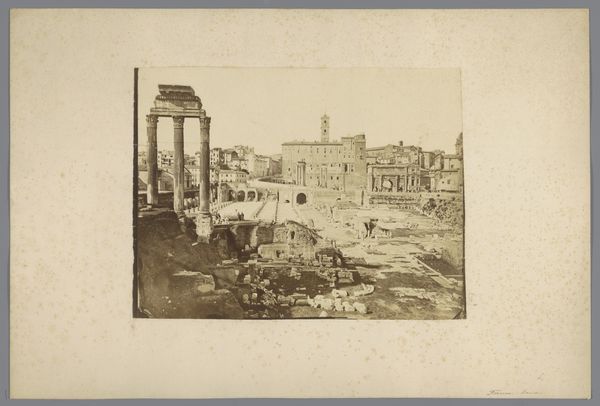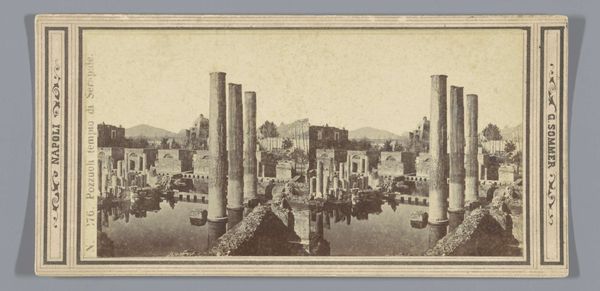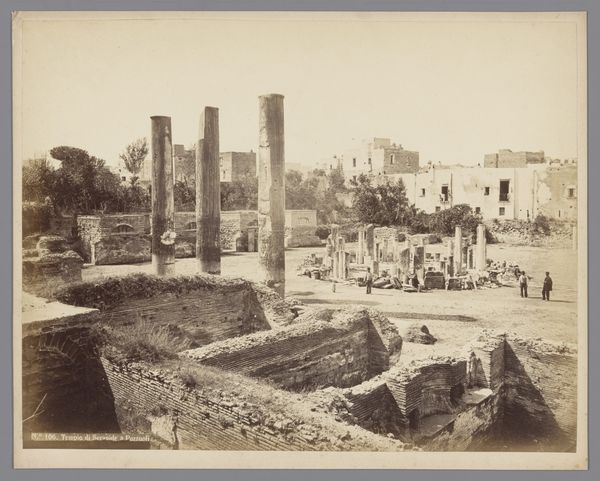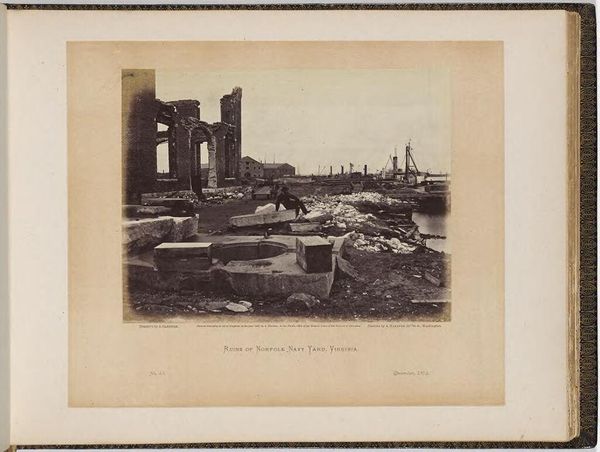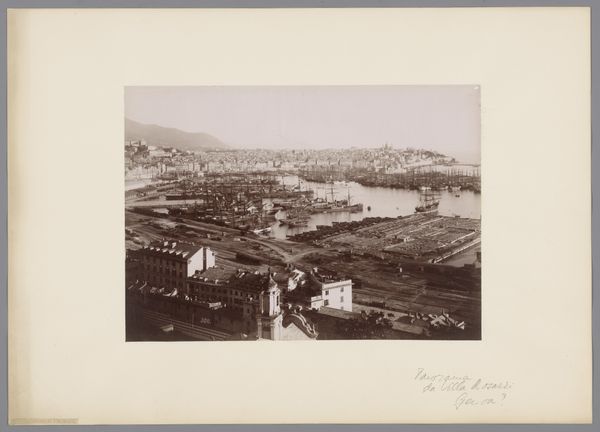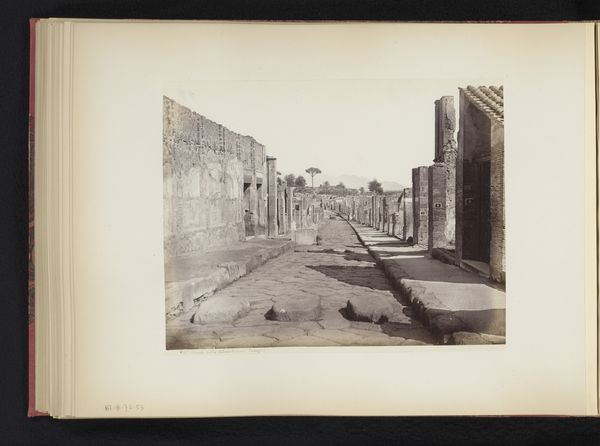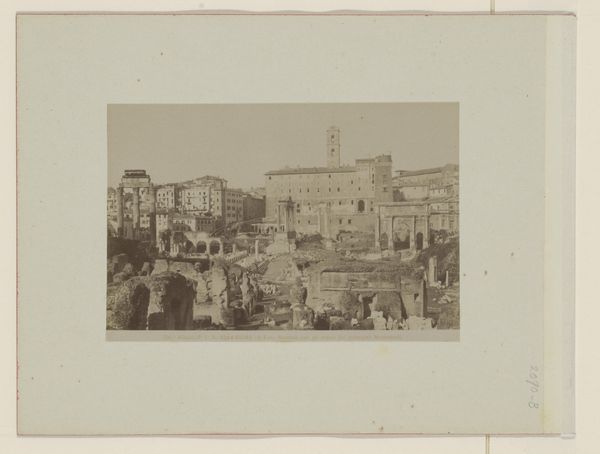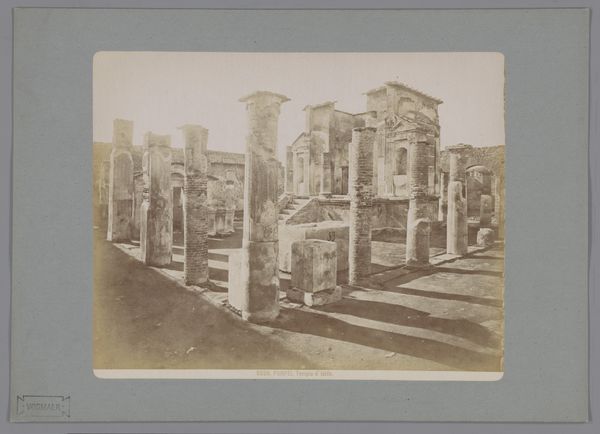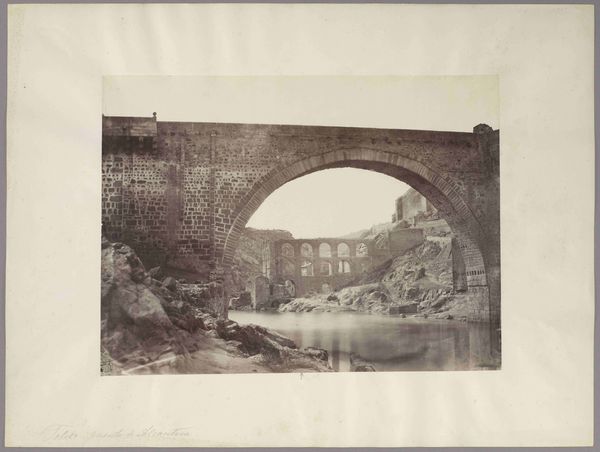
albumen-print, print, paper, photography, albumen-print, architecture
#
albumen-print
#
16_19th-century
#
neoclassicism
# print
#
landscape
#
classical-realism
#
paper
#
photography
#
column
#
watercolour illustration
#
history-painting
#
albumen-print
#
architecture
Copyright: Public Domain
Curator: Before us is Giorgio Sommer's "Pozzuoli, Temple of Serapis," an albumen print dating from around 1867 to 1873. It resides here at the Städel Museum. What are your first impressions? Editor: There’s a melancholic serenity to it. The columns rising from the water, the still reflections... it feels like witnessing a forgotten moment in history, rendered in tones of sepia decay. Curator: The albumen printing process, utilizing egg whites, yields a unique tonal range, doesn't it? Note how Sommer uses that quality to emphasize the textured surfaces of the ruins, drawing the eye to their fractured forms. Editor: Indeed. And I am drawn to the submerged materiality. Consider the physical labor involved in quarrying, transporting, and erecting those colossal columns originally. Now they’re half-submerged, reclaimed by the earth and water, reflecting on time and degradation. What do we know about their exploitation of those making the original architecture? Curator: It's fascinating how Sommer captures this specific moment, reflecting a wider preoccupation in 19th-century photography: documenting archaeological sites. But let's consider the formal elements. The strong verticals of the columns against the horizontal plane of the water... Editor: But there’s more than formalism; let’s think of the social context. Photography at this time aided the colonial project. What narratives of power and decline were embedded within its wide consumption? And how the use of Albumen printing influenced consumption and changed the business models. Curator: A fair point. Though I maintain the composition is critical to understanding the photograph's inherent power. The placement of figures on the left anchors the ruin within a contemporary frame of reference, humanizing it, wouldn't you agree? Editor: I concur. It brings to life, visually, what one reads in descriptions of Italy and Italian architecture from that era. However, those people represent just a select type, mainly rich tourists, and not the workers who lived and breathed that very air. We have a staged reality created for an audience. Curator: An excellent observation. Thinking about the context enriches our interpretation here. Editor: Definitely. By questioning its materiality and what the artist’s material choices mean to him, and the image he creates, we bring new insights to the artwork.
Comments
No comments
Be the first to comment and join the conversation on the ultimate creative platform.
